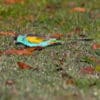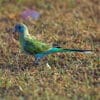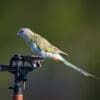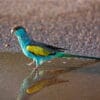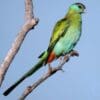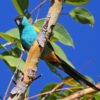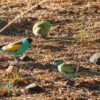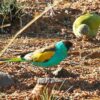Hooded Parrot
Also known as:
Hooded Parakeet, Black-hooded Parrot or Parakeet, Antbed Parrot or Parakeet, Anthill Parrot or Parakeet
Also known as:
Hooded Parakeet, Black-hooded Parrot or Parakeet, Antbed Parrot or Parakeet, Anthill Parrot or Parakeet
DID YOU KNOW?
The Hooded Parrot nests in termite mounds. The tunnel to the nest goes into the centre of the mound, where the temperature is stable.

Psephotellus

dissimilis
Size:
26 cm (10 in)
Weight:
50-60 g (1.75-2.1 oz)
Subspecies including nominate:
one
Colour Adult:
Male-black crown to area below eyes; dark brown upperparts; blue/green rump; turquoise/blue face and underparts; orange/red undertail coverts widely margined white; golden/yellow lesser, inner median, and inner secondary wing coverts; olive/green tail wide tipped with blue/white. Beak blue/grey tipped with darker grey. Eye dark brown. Female-dull green in colour; grey/brown forehead, crown, and forecheeks; pink/grey undertail coverts margined with white; underwing stripe yellow/white.
Colour Juvenile:
As in adult female with underwing stripe, in males narrower.
Call:
Calls are high-pitched chu-weet…chu-weet in flight and immediately after landing; when alarmed or cornered agitated, shrill chattering, with some sharp notes. Feeding is done in silence.
More Information:
Content Sources:
CITES
BirdLife International
Cornell Lab of Ornithology/Birds of the World
Parrots: A Guide to Parrots of the World, Juniper and Parr, 1998
Parrots of the World, Forshaw and Cooper, 1977. 2010 edition
Parrots of the World, Forshaw, 2006.
Lexicon of Parrots, Thomas Arndt.
Parrots in Aviculture, Low, 1992.
Parrots: Their Care and Breeding, Low, 1986.
Captive Status:
Common in parts of the EU where it has been bred for many generations.
Longevity:
15-25 yrs
Housing:
Walk-in enclosure, minimum length 3 m (9.8 ft).
Diet:
Small seed mix such as: canary, millet and smaller amounts of oats, buckwheat, safflower, and a little hemp; limited sunflower seed; spray millet; green leaves such as: Swiss chard, lettuce, sowthistle, dandelion, chickweed; seeding grasses; rearing food made from: hard-boiled egg, wholegrain bread and carrot, all ground to crumbly consistency; fruits such as: apple, pear, orange, banana, pomegranate; fresh green peas, fresh corn and commercial insectivorous food or mealworms when rearing young; complete kibble.
Enrichment:
Enjoys bathing. Also provide bird-safe wooden chew toys, vegetable tanned leather toys, puzzle/foraging toys, heat sterilized pine cones, and fir, willow, pine and unsprayed flowering branches.
Nest Box Size:
Heated or insulated vertical box 6″ x 6″ x 16″ (15 cm x 15 cm x 40.6 cm).
Clutch Size:
4-6
Fledging Age:
5 weeks
Hatch Weight:
—
Peak Weight:
—
Weaning Weight:
—
World Population:
About 20,000 and stable, with no recent declines.
IUCN Red List Status:
Least Concern
CITES Listing:
Appendix I
Threat Summary:
Not globally threatened. A BirdLife “restricted-range” species. Range has contracted due to overgrazing by livestock and inappropriate fire regimes since the start of the 20th century. It may also be occasionally (and illegally) taken for the wild bird trade. In the last 10 years no decline in population has been recorded, and it is generally thought to still be common.
Range:
N Australia, in northern N Territory south to lat. 15 degrees, 30 minutes S and from Daly and Mary Rivers east to western shores of Gulf of Carpentaria.
Habitat:
Found in dry open woodland, particularly Melaleuca dominated flood-plains and Spinifex grassland, also areas with termite mounds and in Eucalypt along riverways and rocky ridges.
Wild Diet:
Feeds mainly on seeds of seasonal grasses and herbaceous perennial plants during the dry season and 23 species of Poaceae during the wet season.
Ecology and Behaviour:
Primarily seen in pairs or small groups; outside the breeding season is reported to congregate in groups of up to 100 individuals where food is abundant. Are terrestrial feeders, resting quietly in surrounding foliage during the heat of the day.
Clutch and Egg Size:
4-6 rounded eggs, 21.5 x 18.5 mm (0.8 x 0.7 in).
Breeding Season:
January-April; nest is mainly in ground-based, turreted termitarium.
Related Links:
—
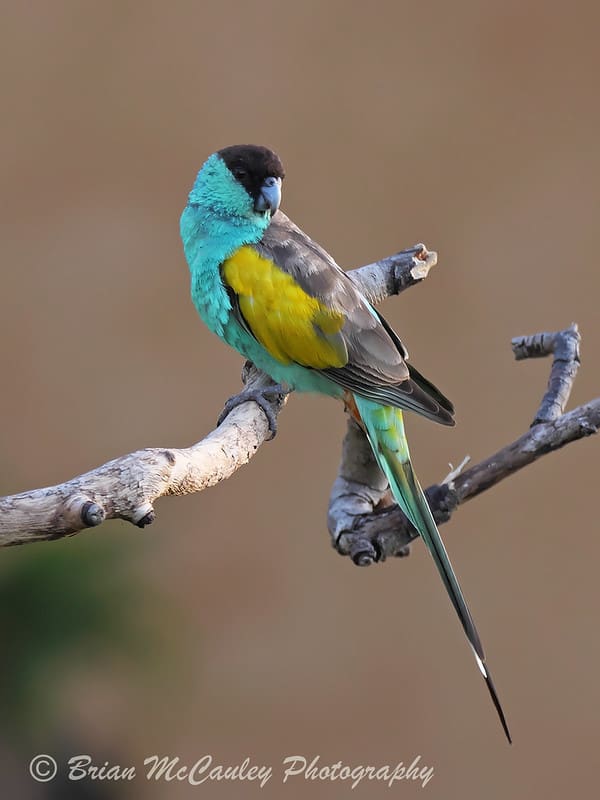
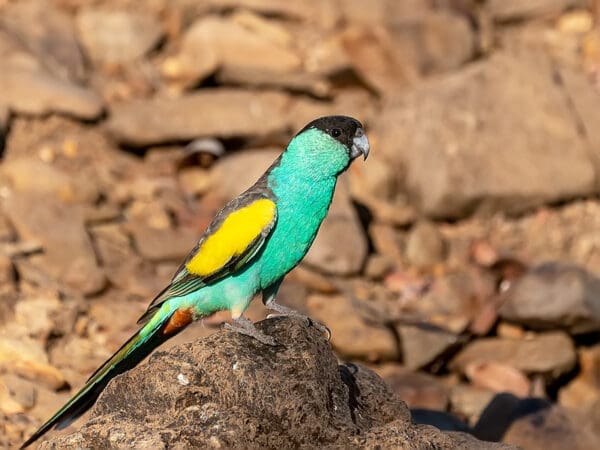
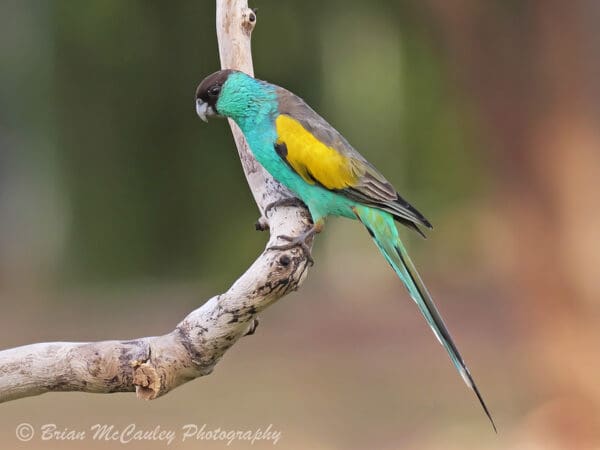
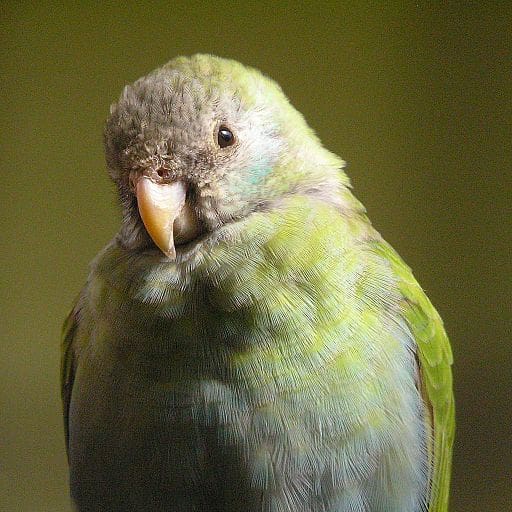
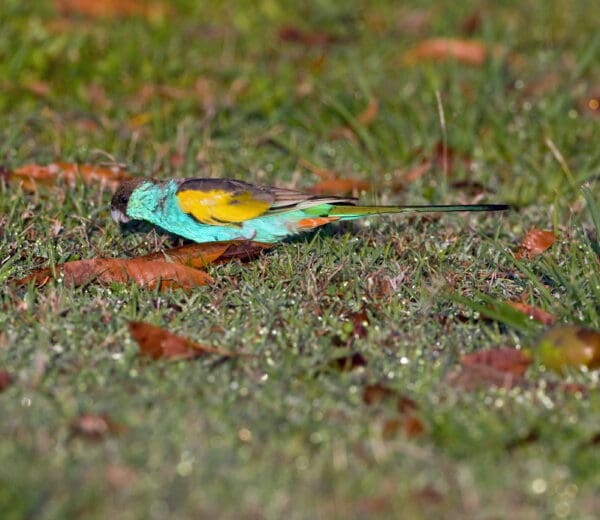
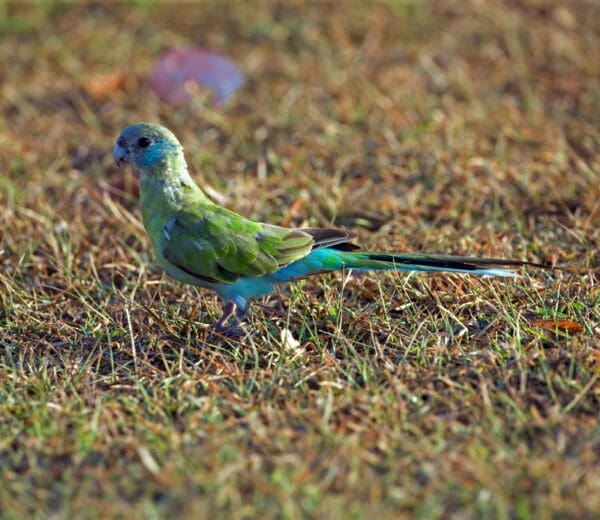
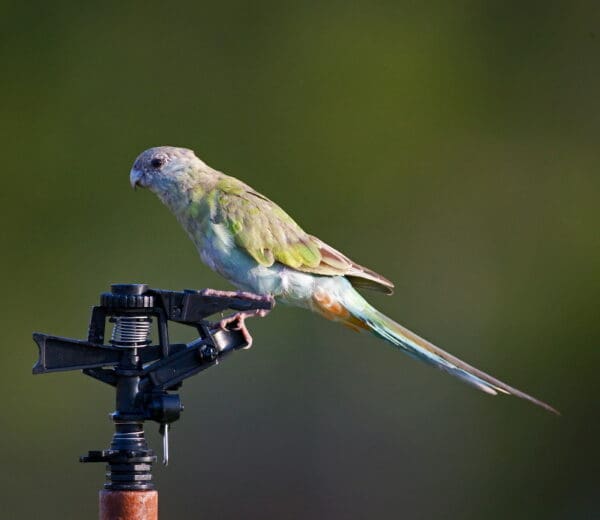
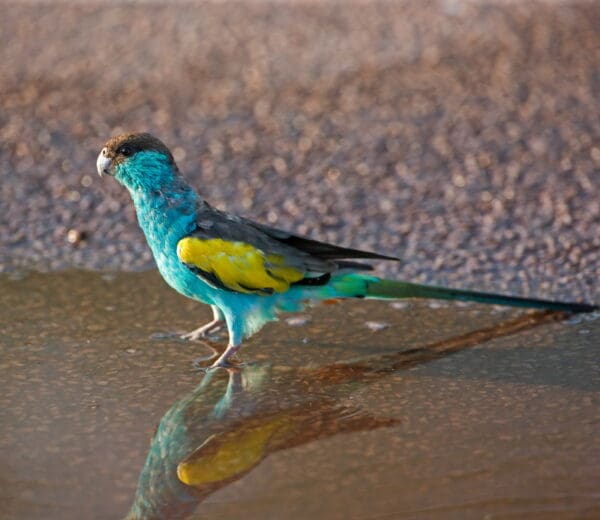
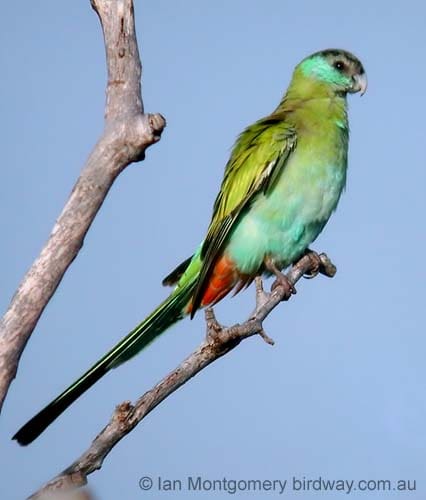
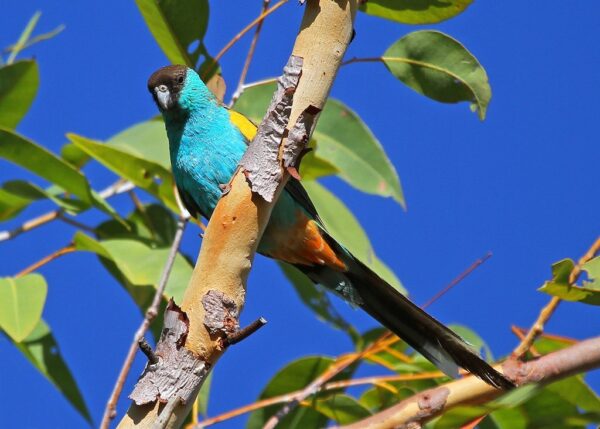
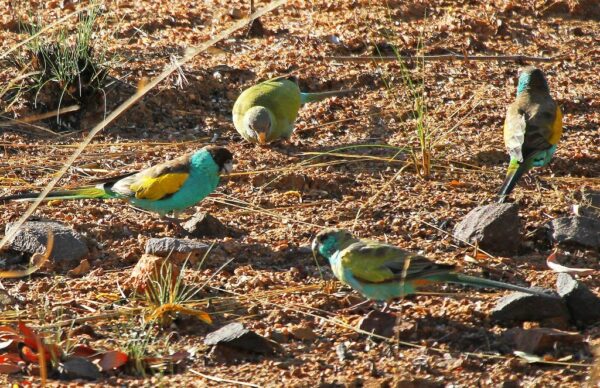
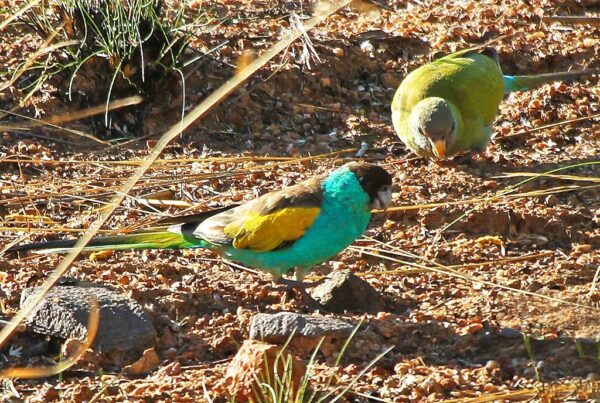
![© Brian McCauley [CC BY-NC 2.0] via Flickr A wild male Hooded Parrot perches on a branch](https://parrots.org/wp-content/uploads/2023/01/wpt_Hooded-Parrot_1195-19-100x100.jpg)
![© David Cook [CC BY-NC 2.0] via Flickr A wild male Hooded Parrot perches on a rock](https://parrots.org/wp-content/uploads/2023/01/wpt_Hooded-Parrot_1195-21-100x100.jpg)
![© Brian McCauley [CC BY-NC 2.0] via Flickr A wild male Hooded Parrot perches on branch](https://parrots.org/wp-content/uploads/2023/01/wpt_Hooded-Parrot_1195-20-100x100.jpg)
![© Originally posted to Flickr as parkiet xxx, frank wouters derivative work: Snowmanradio (Psephotus_dissimilis_(female)_-Burgers_Zoo-8a.jpg) [CC BY 2.0], via Wikimedia Commons A female Hooded Parrot perches on a branch at Burgers Zoo, Netherlands](https://parrots.org/wp-content/uploads/2023/01/wpt_Hooded-Parrot_1195-6-100x100.jpg)
